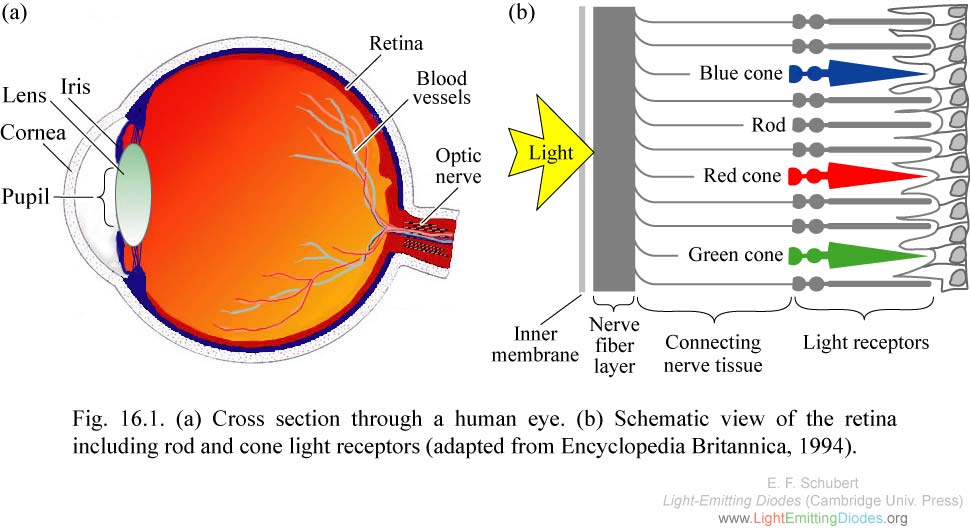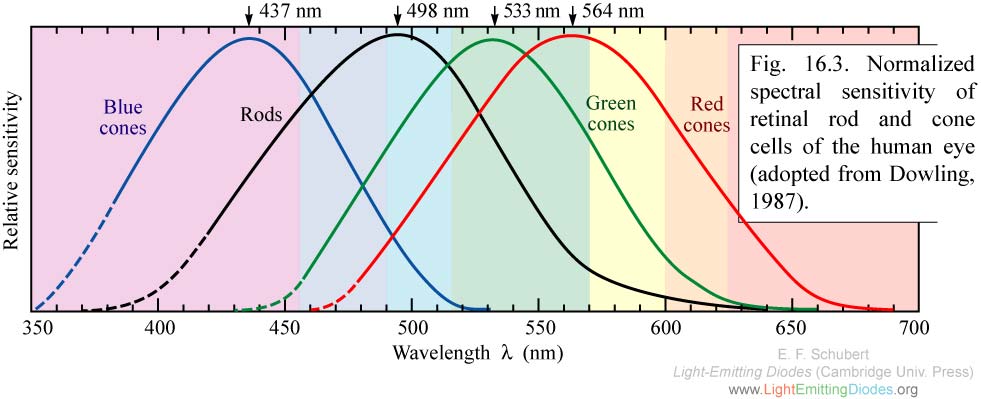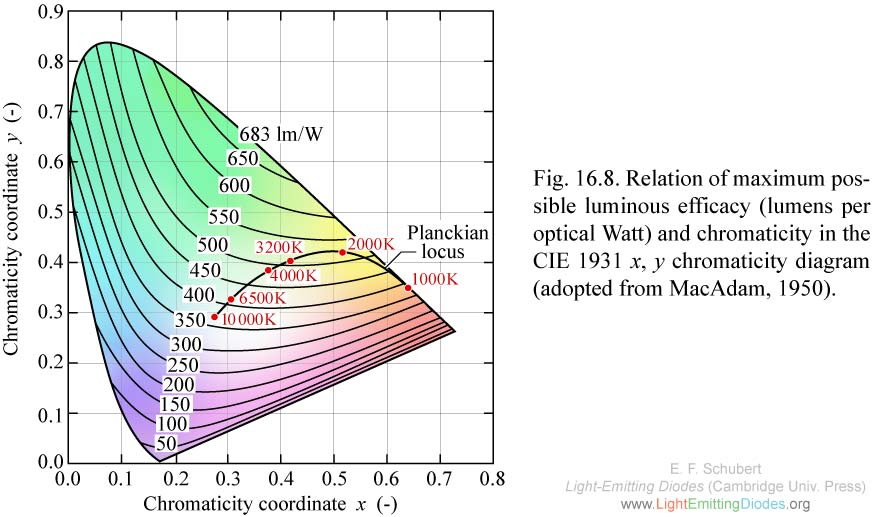
|
Fig. 16.1. (a) Cross section through a human eye. (b) Schematic view of the retina including rod and cone light receptors (adapted from Encyclopedia Britannica, 1994).
|

|
Fig. 16.2. Approximate ranges of vision regimes and receptor regimes (after Osram Sylvania, 2000).
|

|
Fig. 16.3. Normalized spectral sensitivity of retinal rod and cone cells of the human eye (adopted from Dowling, 1987).
|

|
Fig. 16.4. Plumberís candle as used by plumbers to melt lead when joining water pipes in the 19th century.
|

|
Fig. 16.5. Area of LED, A, and projected area, A cos theta, used for the definition of the luminance of an LED.
|
.jpg)
|
Fig. 16.6. Comparison of CIE 1931 and CIE 1978 eye sensitivity function V(lambda) for the photopic vision regime. Also shown is the eye sensitivity function for the scotopic vision regime, V'(lambda), that applies to low ambient light levels.
|
 photopic.jpg)
|
Fig. 16.7. Eye sensitivity function, V(lambda), (left ordinate) and luminous efficacy, measured in lumens per Watt of optical power (right ordinate). V(lambda) is greatest at 555 nm. Also given is a polynomial approximation for V(lambda) (after 1978 CIE data).
|

|
Fig. 16.8. Relation of maximum possible luminous efficacy (lumens per optical Watt) and chromaticity in the CIE 1931 x, y chromaticity diagram (adopted from MacAdam, 1950).
|





.jpg)
 photopic.jpg)
